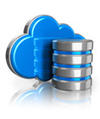
Lead Image © cheskyw, 123RF.com
OpenStack Trove for users, sys admins, and database admins
Semiautomatic
In the wake of cloud computing and under the leadership of Amazon, a number of as-a-service resources have for several years been cornering the market previously owned by traditional IT setups. The idea is quite simple: Many infrastructure components, such as databases, VPNs, and load balancers, are only a means to an end for the enterprise.
If your web application needs a place to store its metadata, a database is usually used. However, the company that runs the application has no interest in dealing with a database. A separate server, or at least a separate virtual machine (VM) together with an operating system, would need to be set up and configured for the database. Issues such as high availability increase the complexity. A database with a known login and address that the application can connect to would work just as well, which is where Database as a Service (DBaaS) comes in.
The advantage of DBaaS is that it radically simplifies the deployment and maintenance of the relevant infrastructure. The customer simply clicks in the web interface on the button for a new database, which is configured and available shortly thereafter. The supplier ensures that redundancy and monitoring are included, as well.
A DBaaS component for OpenStack named Trove [1] has existed for about three years. Although you can integrate it into an existing OpenStack platform, Trove alone is unlikely to make you happy. If you look into the topic in any depth, you will notice that vendors, users, and database administrators have to work hand in hand to create a useful service in OpenStack on the basis of Trove.
In this article, I tackle the biggest challenges that operating Trove can cause for all stakeholders. OpenStack vendors can discover more about the major obstacles in working with Trove, and cloud users can look forward to tips for the handling Trove correctly in everyday life.
...Buy this article as PDF
(incl. VAT)
Buy ADMIN Magazine
Subscribe to our ADMIN Newsletters
Subscribe to our Linux Newsletters
Find Linux and Open Source Jobs
Most Popular
Support Our Work
ADMIN content is made possible with support from readers like you. Please consider contributing when you've found an article to be beneficial.







